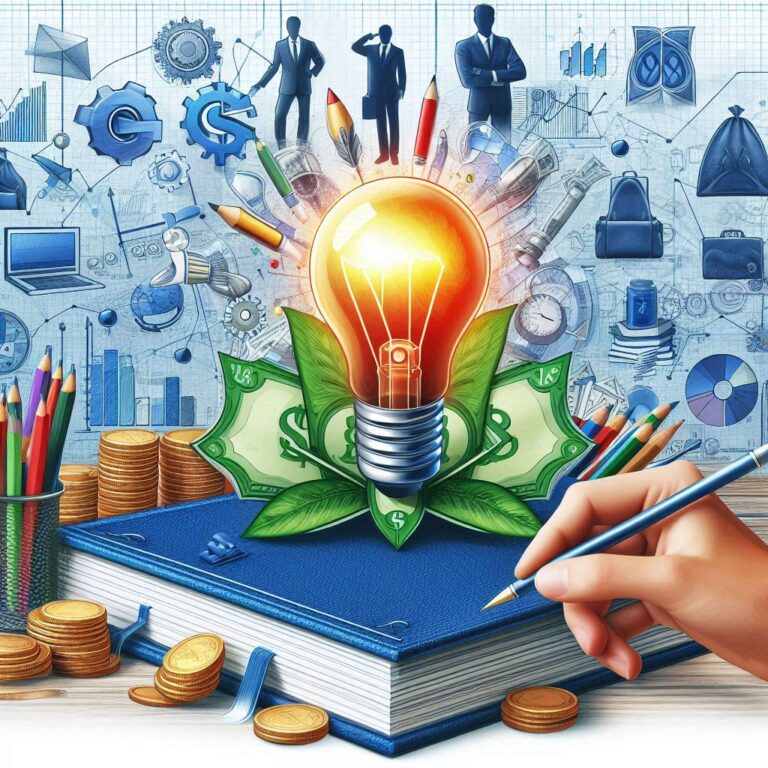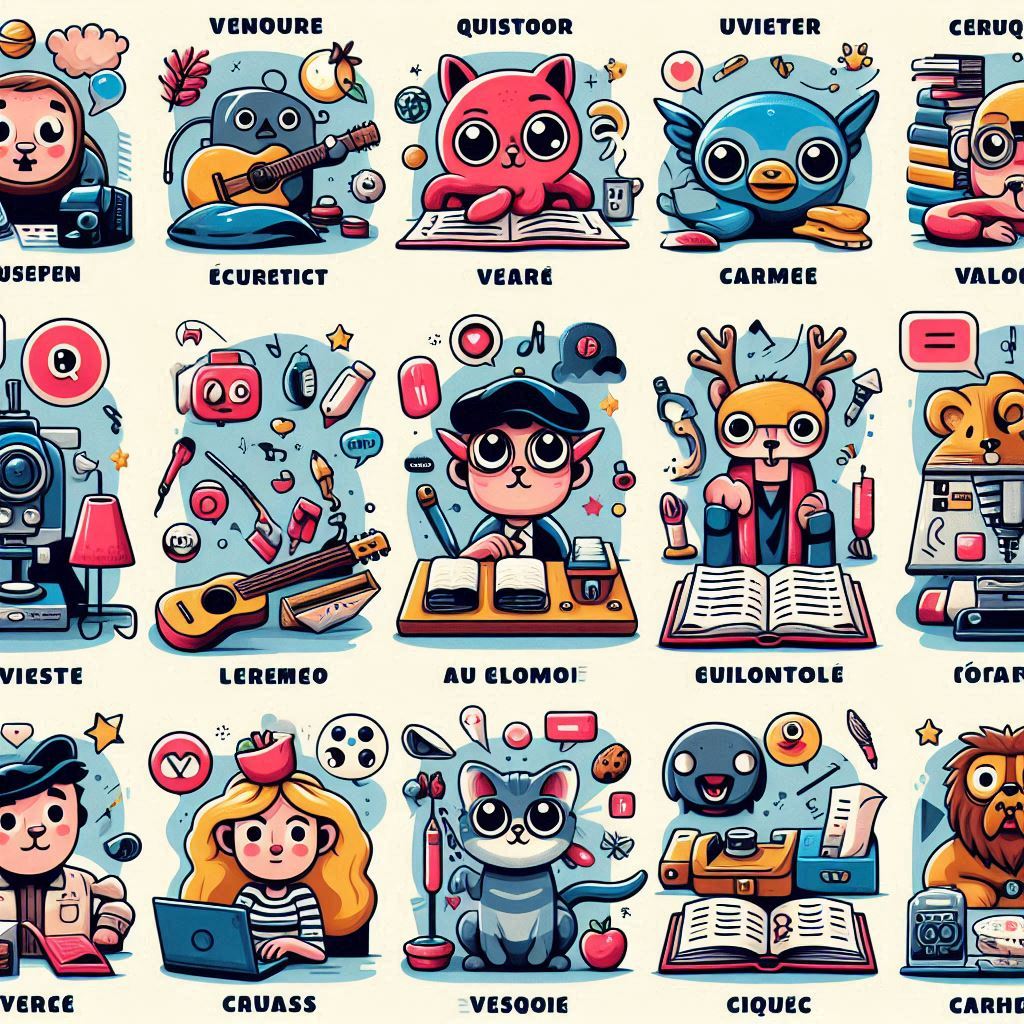Section 1: Understanding Business Activity
Need
A good or service that is essential for living.
Want
A good or service that people would like to have but is not necessary for living. People have unlimited wants.
Economic problem
There are unlimited wants but limited resources to produce the goods and services to satisfy wants. This creates scarcity.
Factors of production
Resources needed to produce goods and services. There are 4 factors of production (land, labour, capital, enterprise) and they are limited in supply.
Scarcity
The lack of sufficient products to fulfil the total wants of the population.
Opportunity Cost
The next best alternative given up by choosing another item.
Specialization
When people and businesses concentrate on what they are best at.
Division of labour
When the production process is split up into different tasks and each worker performs one of these tasks. It is a form of specialization.
Business
Combines factors of production to make products (goods and services) which satisfy people’s wants.
Added Value
It is the difference between the selling price of a product and the cost of bought in materials and components.
Primary Sector
Extracts and uses natural resources to produce raw materials used by other businesses.
Secondary Sector
Manufactures goods using raw materials provided by Primary Sector.
Tertiary Sector
Provides services to customers and other sectors of industry.
De-industrialization
There is a decline in the importance of the secondary, manufacturing sector of industry in a country.
Mixed Economy
Has both a private sector and a public sector.
Private Sector
Businesses not owned by government. Make their own decision about selling price. Aim to run profitably. Some government control.
Public Sector
Government-owned, controlled businesses and organizations. Decide which price to charge consumers. Different aim from Private Sector.
Capital
Money invested into business by owners.
Entrepreneur
A person who organizes, operates and takes the risk for a new business venture.
Business Plan
Document containing the business objectives and important details about the operations, finance and owners of the new businesses.
Capital Employed
Total value of capital used in the business.
Internal Growth
When a business expands its existing operations.
External Growth
When a business takes over or merges with another business.
Integrations/Merger
When two businesses agree to join their firms together to make one business.
Takeover/Acquisition
One business buys out the owners of another business which then becomes part of the ‘predator’ business
Horizontal Integration
When one company merges with or takes over another in the same industry in the same stage of production.
Vertical Integration
When one company merges with or takes over another in the same industry but at a different stage of production.
Conglomerate Integration/Diversification
When one company merges with or takes over another in a completely different industry.
Sole Trader
Business owned by one person
Limited Liability
The liability of shareholders in a company is only limited to the amount they invested.
Unlimited Liability
The owners of a business can be held responsible for the debts of the business they own. Their liability is not limited to the investment they make.
Partnership
A form of business in which two or more people agree to jointly own a business.
Partnership Agreement
The written legal agreement between partners.
Unincorporated Business
One that does not have a separate legal entity. Sole traders and partnerships are unincorporated businesses.
Incorporated Business
Companies that have a separate legal status from their owners.
Shareholders
Owners of a limited company. They buy shares which represent part ownership of a company.
Annual General Meeting
A legal requirement for all companies. Shareholders may attend and vote on who they want to be on the Board of Directors for the coming year.
Dividend
Payments made to shareholders from the profit (after tax) of a company. They are the return to shareholders for their investment in the company.
Franchise
Business based upon the use of brand names and trading methods of an existing successful business. Franchisees use franchisor’s ideas, names.
Business Objective
Aims and targets that a business works towards.
Profit
Total income (sales revenue) – total costs
Market share
Proportion of total market sales achieved by one business.
Social Enterprise
Has social objectives as well as an aim to make profit to reinvest back into the business.
Stakeholder
A person or group with a direct interest in the performance and activities of a business.
Section 2: People in Business
Motivation
The reason why employees want to work hard and effectively for the business
Wage
Payment for work, usually paid weekly, can be in cash or in bank account
Salary
Payment for work, usually paid monthly, into bank account
Commission
Payment relating to number of sales made
Profit sharing
Proportion of company’s profits are paid to employees
Bonus
Additional amount of payment above basic pay as reward for good work
Performance-related pay
Pay which is related to effectiveness of employee where output can be measured
Share ownership
Shares of company given to employees so they become part owners
Appraisal
Method of assessing effectiveness of employee
Fringe benefits
Non-financial rewards given to employees
Job satisfaction
Enjoyment derived from feeling that you have done a good job
Job rotation
Involves workers swapping round and doing a specific task for a specific time the changing again
Job enlargement
Extra tasks of similar level of work are added to worker’s job description
Job enrichment
Looking at jobs and adding more tasks that require more skill and/or responsibility
Organizational structure
Refers to levels of management and division of responsibilities within an organization
Chain of command
Structure in an organization which allows instructions to be passed down from senior management to lower levels of management
Span of control
Number of subordinates working directly under a manager
Line managers
Have direct responsibility over people below them in a hierarchy of and organization
Staff managers
Specialists who provide support, information and assistance to line managers
Delegation
Giving subordinate authority to perform particular tasks
Leadership styles
Different approaches to dealing with people when in a position of authority – autocratic, laissez-faire or democratic
Autocratic leadership
Where the manager expects to be in charge of the business and to have their orders followed
Democratic leadership
Gets other employees involved in decision making
Laissez-faire leadership
Makes broad objectives known to workers, they are left to make their own decisions and organize their work
Trade union
Group of workers who have joined together to ensure their interests are protected
Closed shop
All members must be a member of the same trade union
Recruitment
The process from identifying that the business needs to employ someone up to the point at which applications have arrived at business
Job analysis
Identifies and records the responsibilities and tasks relating to a job
Job description
Outlines the responsibilities and duties to be done by employee to do a specific job
Job specification
Outlines requirements, qualifications, expertise, etc. for a specified job
Internal recruitment
Vacancy is filled by someone who is an existing employee of the business
External recruitment
Vacancy filled by someone who is not an existing employee and new
Part-time
Employment that is between 1 and 35 hours a week; less than full time workers
Full-time
Employees will work for 35 or more hours per week
Induction training
Introduction given to new employee explaining firm’s activities, customs and procedures and introduce to other workers
On-the-job training
Person is trained by watching more experienced worker doing the job
Off-the-job training
Person being trained away from workplace, by specialist trainers
Workforce planning
Establishing the number and skills of workforce needed by business for foreseeable future
Redundancy
Employee is no longer needed, so loses his job; not because of unsatisfactory work
Ethical decision
Decision taken by manager because of moral code observed by firm
Industrial tribunal
Legal meeting considers workers’ complaints: unfair dismissal and discrimination
Contract of employment
Legal agreement between employer and employee listing duties and responsibilities of workers
Section 3: Marketing
Market Share
The percentage of total market sales held by one brand or business
Mass Market
Where there is a very large number of sales of a product
Niche Market
A small, usually specialized, segment of a much larger market
Market Segment
An identifiable sub-group of a whole market in which consumers have similar characteristics or preferences
Product Orientated Business
A business whose main focus of activity is on the product itself
Market Orientated Business
A business which carries out market research to find out consumer wants before a product is developed and produced
Marketing Budget
A financial plan for the marketing of a product or product range for some specified period of time. It specifies how much money is available to the product or range, so that the Marketing department know how much they may spend
Market Research
The process of gathering, analyzing and interpreting information about a market
Primary Research
The collation of original data via direct contact with potential or existing customer. Also called field research
Secondary Research
Information that has already been collected and made available for use by others. Also called desk research
Questionnaire
A set of questions to be answered as a means of collecting data for market research
Sample
The group of people who are selected to respond to a market research exercise, such as a questionnaire
Random Sample
When people are selected at random as a source of information for market research
Quota Sample
When people are selected on the basis of certain characteristics (such as age, gender or income) as a source of information for market research
Focus Group
A group of people who are representative of the target market
Marketing Mix
A term which is used to describe all the activities which go into marketing a product or service. These activities are often summarized as the four Ps – product, price, place and promotion
Unique Selling Point (USP)
The special feature of a product that differentiates it from the products of competitors
Brand Name
The unique name of a product that distinguishes it from other brands
Brand Loyalty
When consumers keep buying the same brand again and again instead of choosing a competitors brand
Brand Image
An image or identity given to a product which gives it a personality of its own and distinguishes it from its competitors’ brands
Packaging
The physical container or wrapping for a product. It is also used for promotion and selling appeal
Product Life Cycle
Describes the stages a product will pass through from its introduction, through its growth until it is mature and then finally its decline
Cost-Plus Pricing
The cost of manufacturing the product plus a profit mark-up
Competitive Pricing
When the product is prices in line with or just below competitors’ prices to try and capture more of the market
Penetration Pricing
When the price is set lower than the competitors’ prices in order to be able to enter a new market
Price Skimming
Where a high price is set for a new product on the market
Promotional Pricing
When a product is sold at a very low price for a short period of time
Price Elasticity
A measure of the responsiveness of demand to a change in price
Informative Advertising
Where the emphasis of advertising is to give full information about the product
Persuasive Advertising
Advertising or promotion which is trying to persuade the consumer that they really need the product and should buy it
Target Audience
Refers to the people who are potential buyers of a product or service
Sales Promotion
Incentives such as special offers or special deals aimed at consumers to achieve short- term increases in sales
Distribution Channel
The means by which a product is passed from the place of production to the customer or retailer
Agent
An independent person or business that is appointed to deal with the sales and distribution of a product or range of products
E-Commerce
The buying and selling of goods and services using computer systems linked to the internet
Marketing Strategy
A plan to combine the four elements of the marketing mix for a product or service to achieve a particular marketing objective
Section 4: Operations Management
Productivity
The output measured against the inputs used to create it
Productivity Formula
Quantity of output / Quantity of input
Labor Productivity Formula
Output over a given period of time / number of employees
Buffer Inventory Level
Inventory held to deal with uncertainty in customer demand and deliveries of supplies
Lean Production
techniques used by the business to cut down waste and therefore increase efficiency, for example, by reducing the time it takes for a product to be developed and become available for sale
Kaizen
A Japanese term meaning ‘continuous improvement’ through the elimination of waste
Just-In-Time (JIT)
A production method that involves reducing or virtually eliminating the need to hold inventories of the finished product. Supplies arrive just at the time they are needed
Job Production
Where a single product is made at a time
Batch Production
Where a quantity of one product is made, then a quantity of another item will be produced
Flow Production
Where large quantities of a product are produced in a continuous process. It is sometimes referred to as mass production
Automation
Where equipment used in the factory is controlled by a computer to carry out mechanical processes, e.g. spraying paint on a car. The production line will consist mainly of machines and there are only a few people needed to ensure everything runs smoothly
Mechanization
Where production is done by machines but operated by people, e.g. printing press.
Computer Aided Design (CAD)
A computer software that draws items being designed more quickly and allows them to be rotated to see the item from all sides. It is used for designing new products or re- styling existing ones
Computer Aided Manufacture (CAM)
Where computers monitor the production process and control machines or robots on the factory floor
Computer Integrated Manufacturing (CIM)
The total integration of computer aided design (CAD) and computer aided manufacture (CAM). The computers that design the products are linked directly to the computers that aid the manufacturing process
Electronic Point of Sale (EPOS)
Used at checkouts where the operator scans the bar code of each item.
Electronic Funds Transfer at Point of Sale (EFTPOS)
Where the electronic cash register is connected to the retailer’s main computer and also to banks over a wide area computer network.
Fixed Costs
Costs which do not vary with the number of items sold or produced in the short run. They have to be paid whether the business is making any sales or not. They are also known as overhead costs
Variable Costs
Costs which vary directly with the number of items sold or produced
Total Costs
Fixed costs + variable costs
Average Cost per Unit
The total cost of production divided by the total output. Also known as unit cost
Economies of Scale
The factors that lead to a reduction in average costs as a business increases in size
Diseconomies of Scale
The factors that lead to an increase in average costs as a business grows beyond a certain size
Break-Even Level of Output
The quantity that must be produced/sold for total revenue to equal total costs
Break-Even Charts
Graphs which show how costs and revenues of a business change with sales. They also show the break-even level of output
Revenue
The income during a period of time from the sale of goods and services
Total Revenue Formula
Quantity Sold x Price
Break-Even Point
The level of sales at which total costs = total revenue
Contribution
Selling Price – Variable Costs
Break-Even Formula
Total Fixed Costs / Contribution per Unit
Quality
To produce a good service which meets customer expectations
Quality Control
The checking for quality at the end of the production process, whether it is the production of a product or service
Quality Assurance
The checking for the quality standards throughout the production process, whether it is the production of a product or service
Total Quality Management (TQM)
The continuous improvement of products and processes by focusing on quality at each stage of production
Section 5: Financial Information and Financial Decisions
Start-Up Capital
The finance needed by a new business to pay for essential fixed and current assets before it can begin trading
Working Capital
The finance needed by a business to pay its day to day costs
Capital Expenditure
Money spent on fixed assets which will last for more than one year
Revenue Expenditure
Money spent on day to day expenses which do not involve the purchase of a long-term asset, for example wages or rent
Internal Finance
Obtained finance from within the business itself
External Finance
Obtained finance from sources outside of and separate from the business
Micro-Finance
Providing financial services – including small loans – to poor people not served by traditional banks
Cash Flow
The cash inflows and outflows over a period of time
Cash Inflows
The sums of money received by a business during a period of time
Cash Outflows
The sums of money paid out by a business during a period of time
Cash Flow Cycle
Shows the stages between paying out cash for labour, materials, etc. and receiving cash from the sale of goods
Profit
The surplus after total costs have been subtracted from sales revenue
Cash Flow Forecast
An estimate of future cash inflows and outflows of a business, usually on a month by month basis. This then shows the expected cash balance at the end of each month
Opening Cash/Bank Balance
The amount of cash held by the business at the start of the month
Net Cash Flow
The difference, each month, between inflows and outflows
Closing Cash/Bank Balance
The amount of cash held by the business at the end of each month. This then becomes next month’s opening balance
Accounts
The financial records of a firm’s transactions
Accountants
The professionally qualified people who have responsibility for keeping accurate accounts and for producing the final accounts
Final Accounts
They are produced at the end of each year and give details of the profit or loss made over the year and the worth of the business
Income Statement
A document that records the income of a business and all costs incurred to earn that income over a period of time (for example one year). It is also known as a profit and loss account
Gross Profit
It’s made when sales revenue if greater than the cost of goods sold
Sales Revenue
The income to a business during a period of time from the sale or goods or services
Cost of Goods Sold
The cost of producing or buying in the goods actually sold by the business during a time period
Trading Account
It shows how the gross profit of a business is calculated
Net Profit
The profit made by a business after all costs have been deducted from the sales revenue. It is calculated by subtracting overhead costs from gross profits
Depreciation
The fall in the value of a fixed asset over time
Retained Profit
The net profit reinvested back into a company, after deducting tax and payments to owners, such as dividends
Balance Sheet
Shows the value of a business’s assets and liabilities at a particular time. Sometimes referred to as ‘statement of financial position’
Assets
Items of value which are owned by the business. They may be fixed (non-current) or short-term current assets
Liabilities
The debts owed by the business
Non-Current Assets
Items owned by the business for more than one year
Current Assets
Owned by a business and used within one year
Non-Current Liabilities
Long term debts owed by the business
Current Liabilities
Short term debts owed by the business
Liquidity
The ability of a business to pay back its short term debts
Capital Employed
It shareholder’s equity plus non-current liabilities and is the total long-term and permanent capital invested in a business
Illiquid
Means that assets are not easily convertible into cashSection 6: External Influences on Business Activity
Disposable income
The level of income a taxpayer has after paying income tax
Import tariff
Tax on an imported product
Import quota
Physical limit to the quantity of a product that can be imported
Monetary policy
Change in interest rates by the government or central bank, such as European Central Bank
Exchange rate appreciation
Rise in value of a currency compared to other currencies
Social responsibility
When a business decision benefits stakeholders other than shareholders, such as to reduce pollution by using ‘green’ technology
Environment
Natural world including, for example, pure air, clean water and undeveloped countryside
Private costs
The costs paid for by business
Private benefits
Gains to a business
External costs
Costs paid for by society, other than business, as a result of business activity
External benefits
Gains to society other than business, as a result of business activity
Social costs
External costs + private costs
Social benefits
External benefits + private benefits
Sustainable development
Development which doesn’t put at risk the living standards of future generations
Sustainable production methods
Production methods that do minimum damage to environment
Pressure group
Groups who want to change business decisions and they take action such as organizing consumer boycotts
Consumer boycott
When consumers decide not to buy products from businesses that do not act in a socially responsible way
Ethical decisions
Decisions based on a moral code
Globalization
Increases worldwide trade and movement of people and capital between countries
Free trade agreements
When countries agree to trade imports/exports with no barriers such as tariffs or quotas
Protectionism
Government protects domestic firms from foreign competition using tariffs and quotas
Multinational business/TNC
Those with factories, production or service operations in more than one country
Currency appreciation
When the value of a currency rises – it buys more of another currency than before
Currency depreciation
When the value of a currency falls – it buys less of another currency than before






